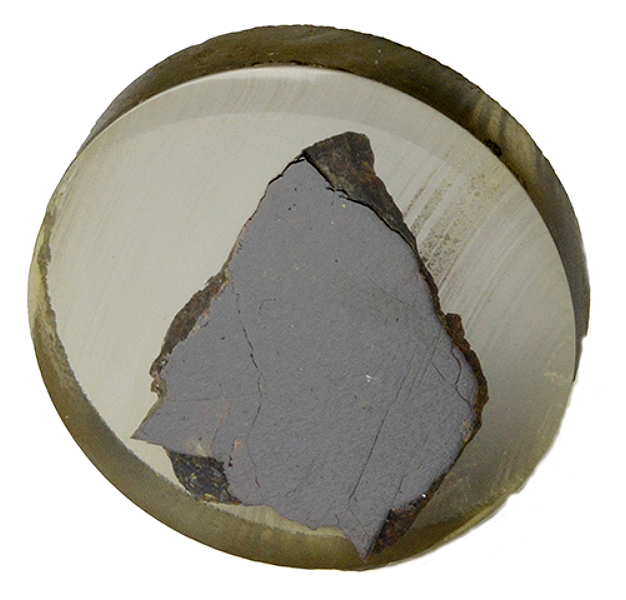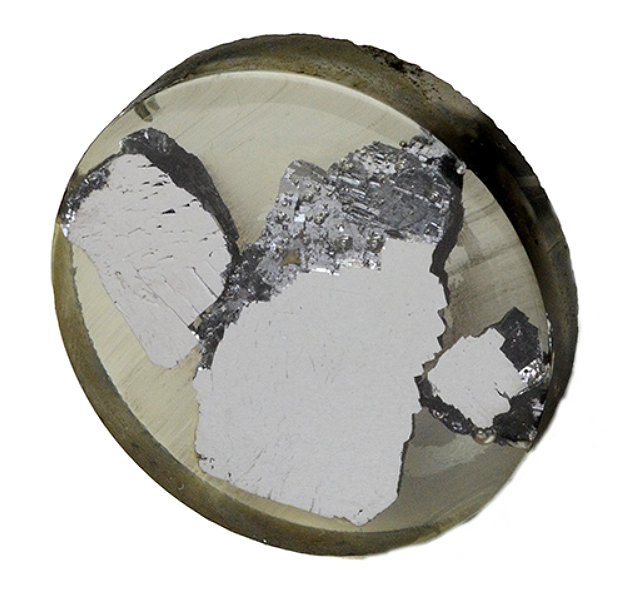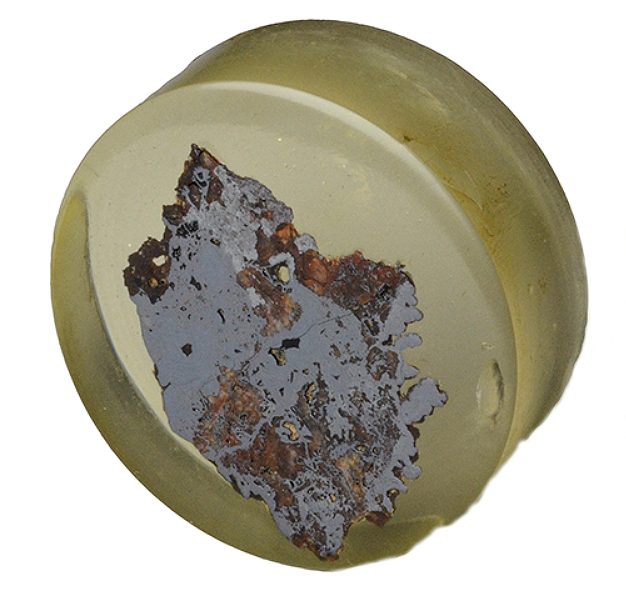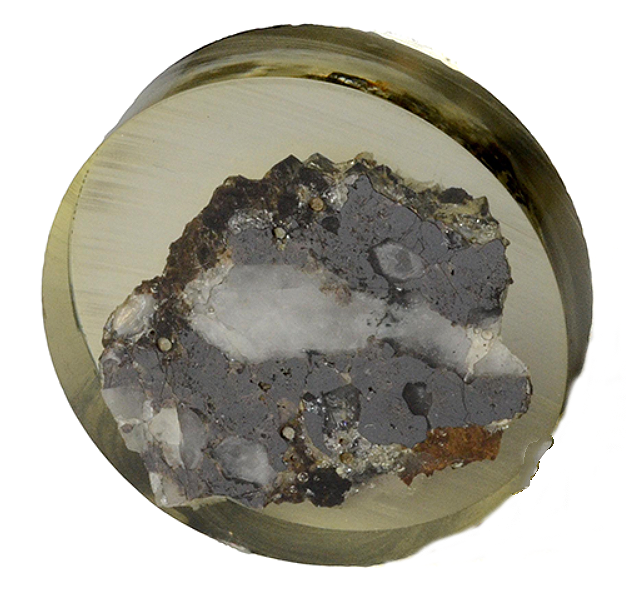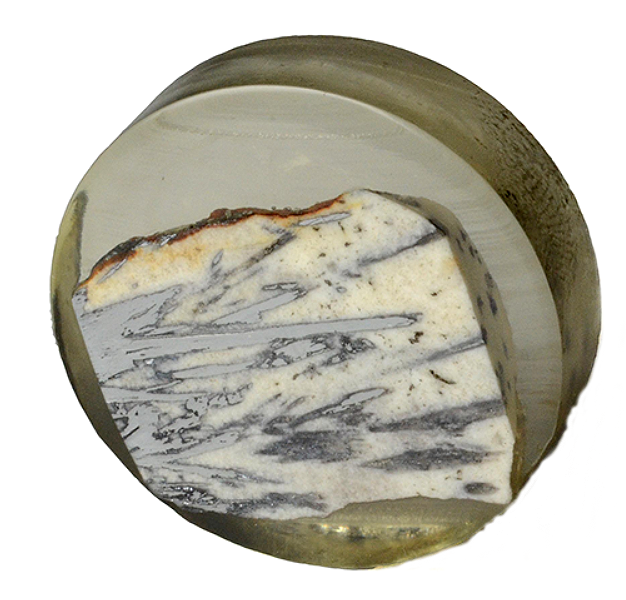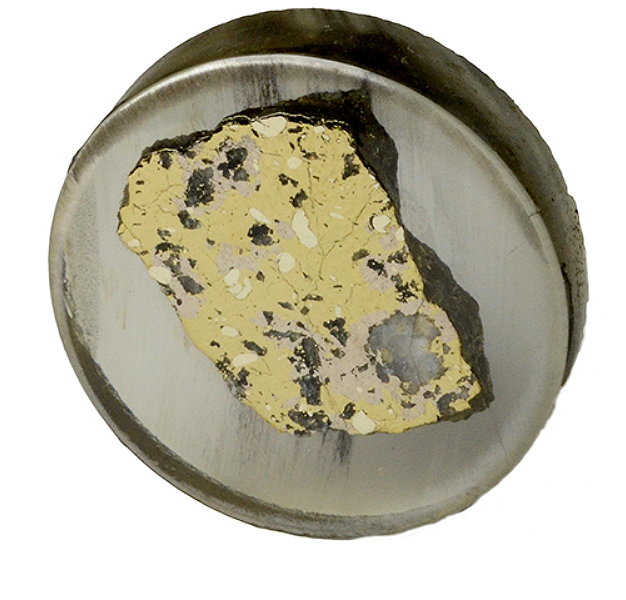
Fact sheet
Bulk of the sample is golden yellow chalcopyrite. Dark grey quartz is mantled by arsenopyrite. Pale yellow inclusions in the chalcopyrite are pyrite.
This small demonstration collection contains metalliferous ore minerals mounted in polished resin blocks rather than thin sections used for rocks in our other collections.
Polished ore minerals exhibit a range of colours and textures in reflected light (they are also commonly studied using scanning electron microscopes and electron microprobe). Metalliferous ores are studied under the microscope to understand their formation, and because of their commercial and strategic value. For a much more detailed explanation, try this open access book.
Ore microscopy and ore petrography
by J.R. Craig and D.J. Vaughan
Sample details
More from this collection
